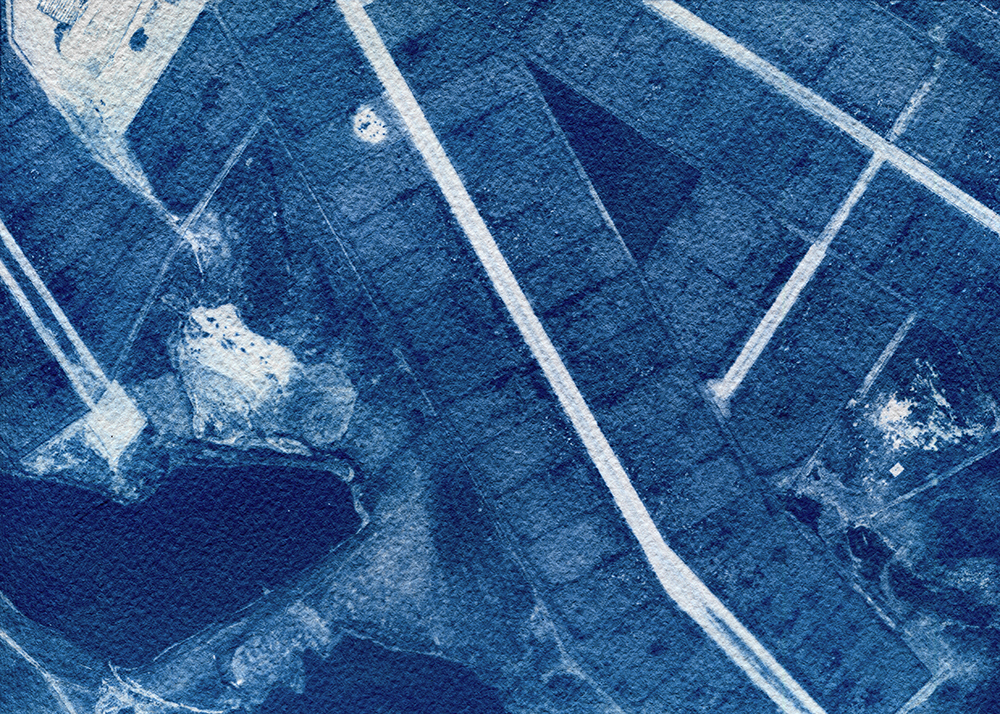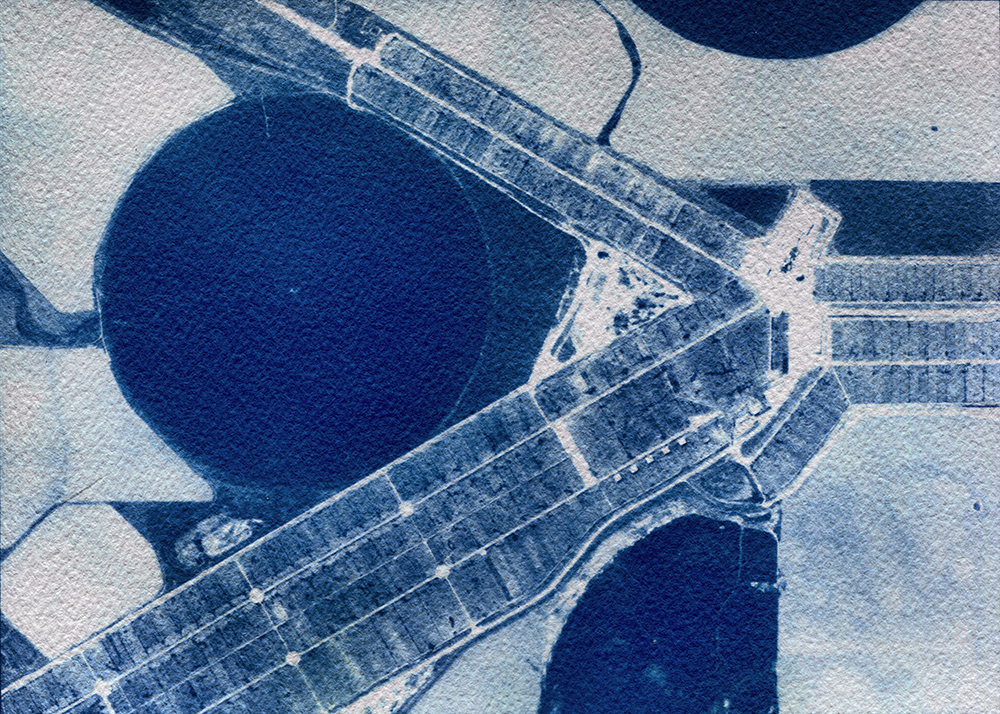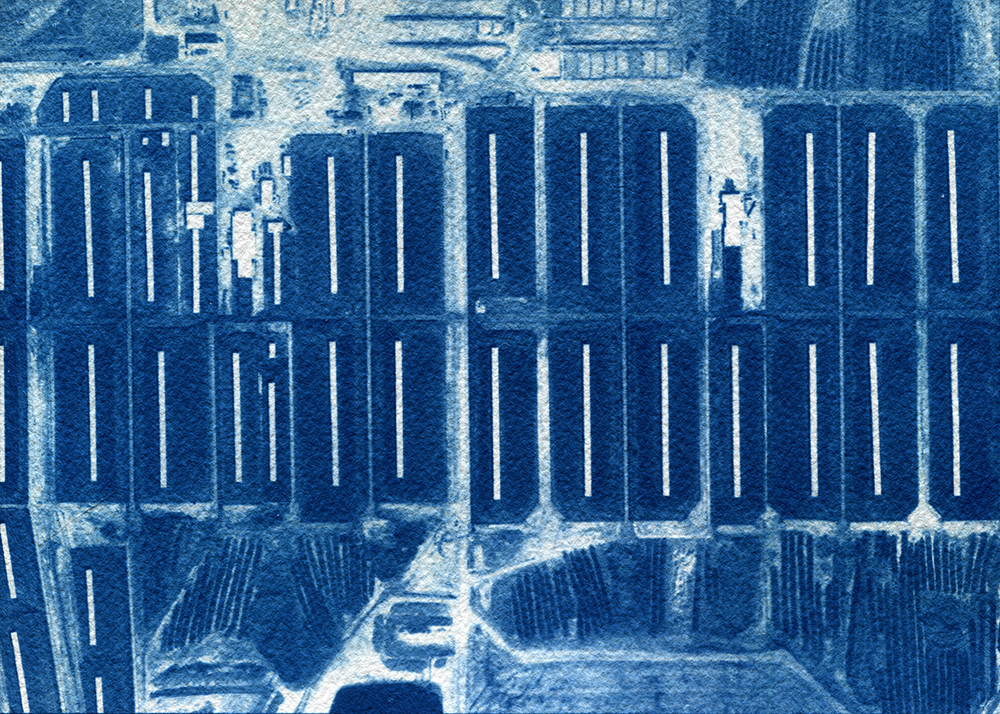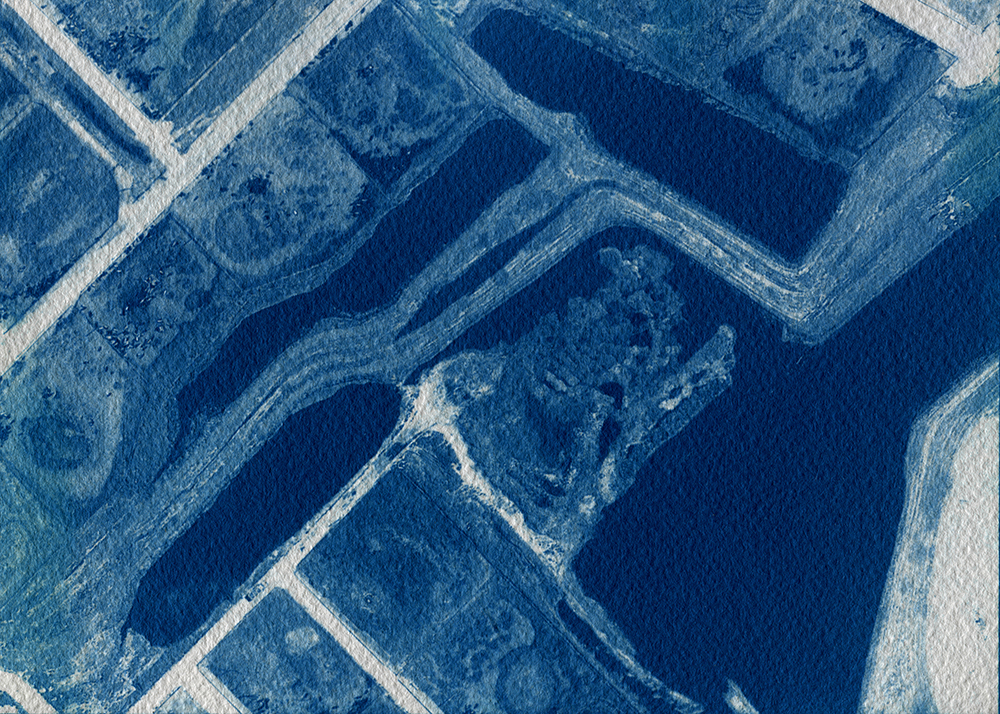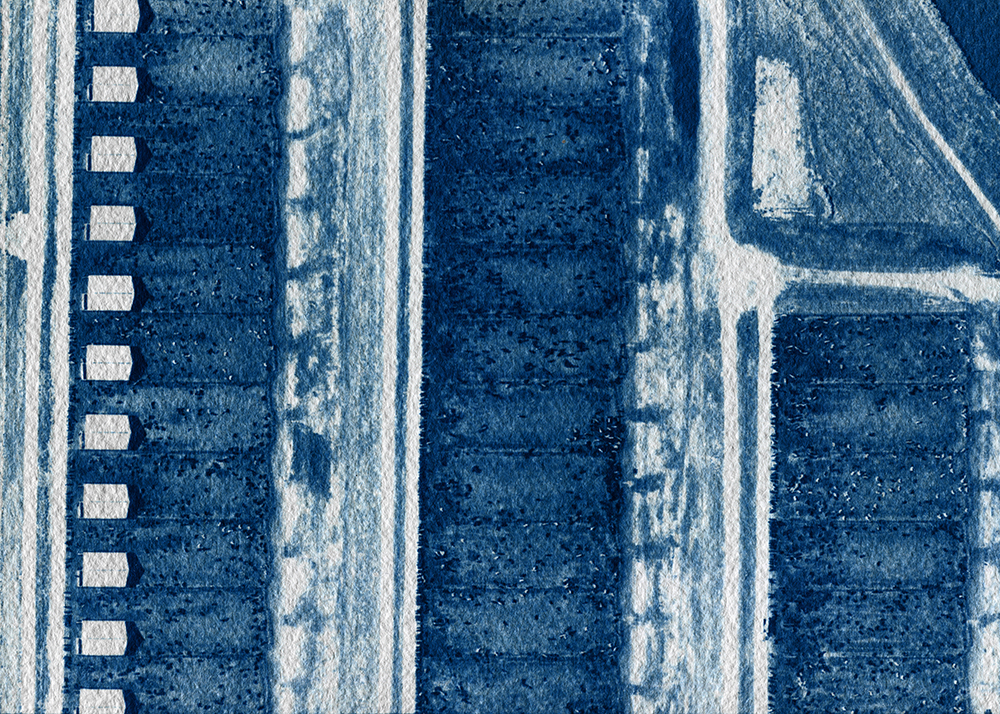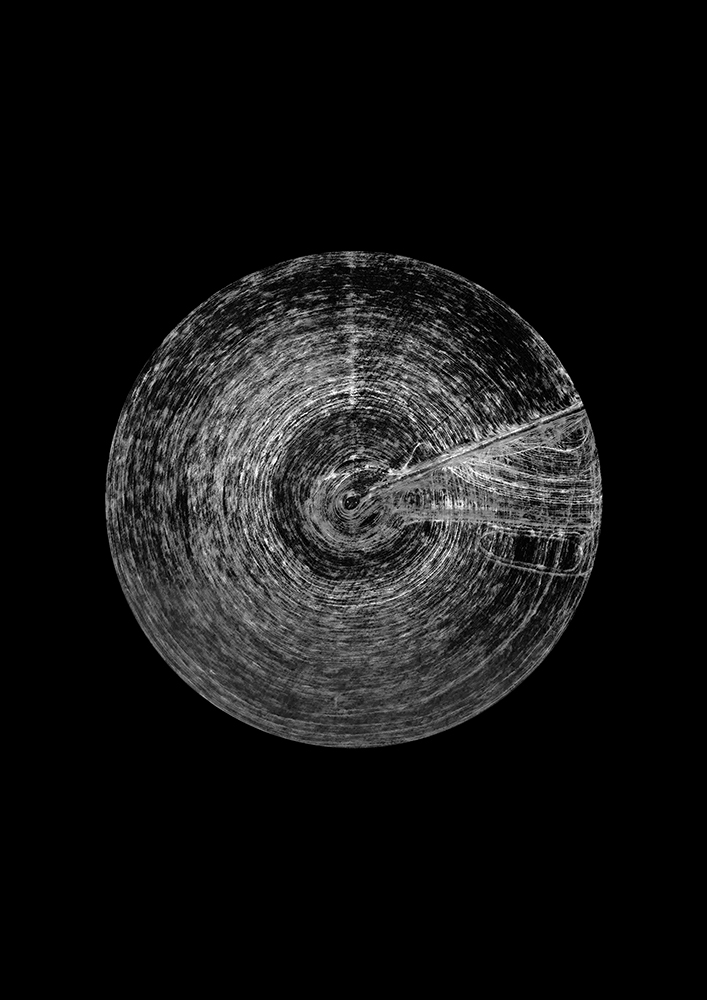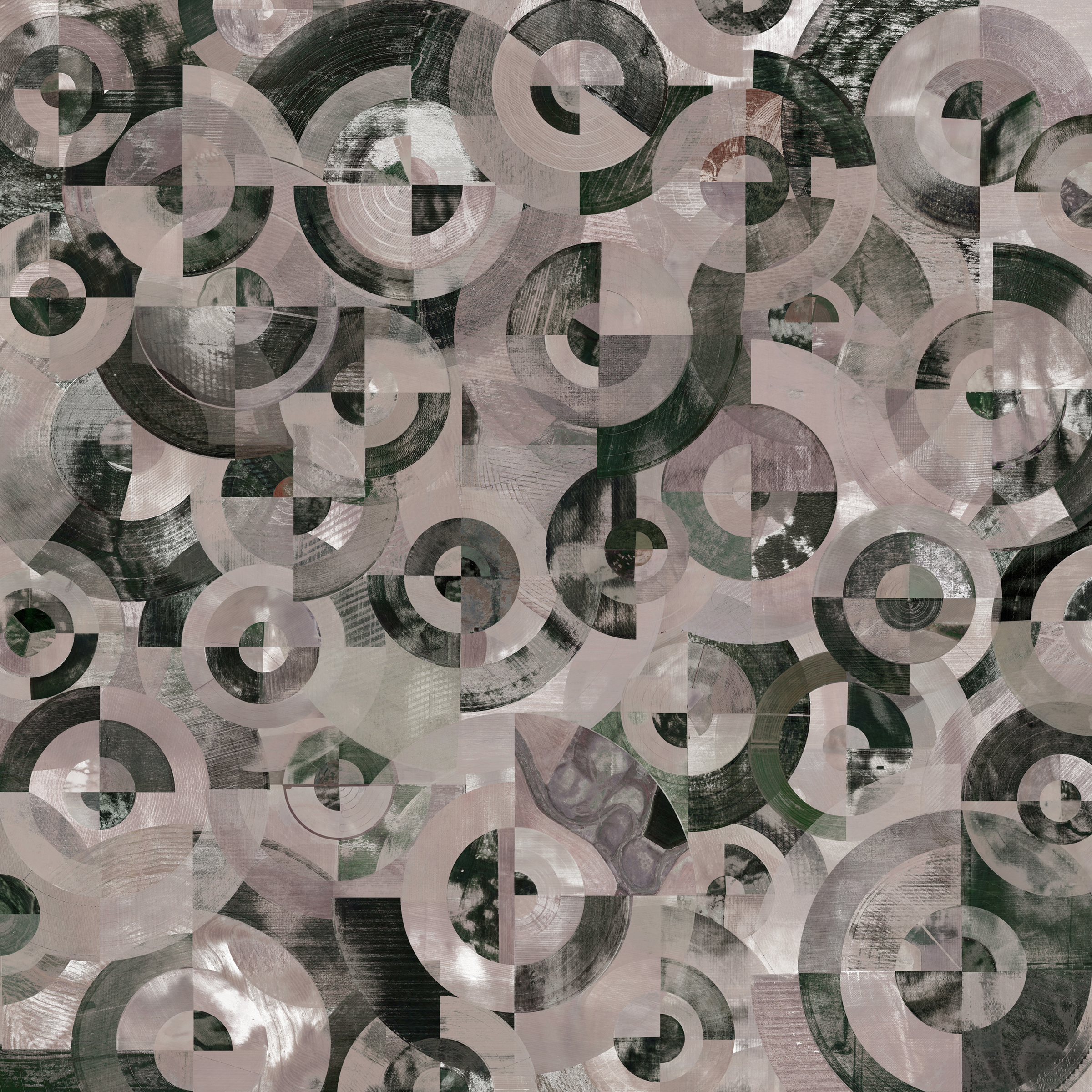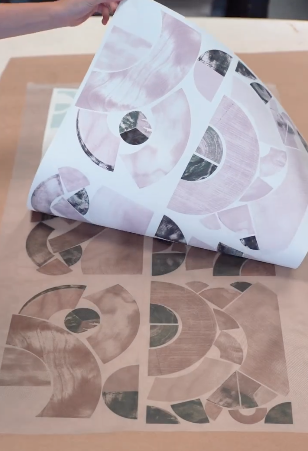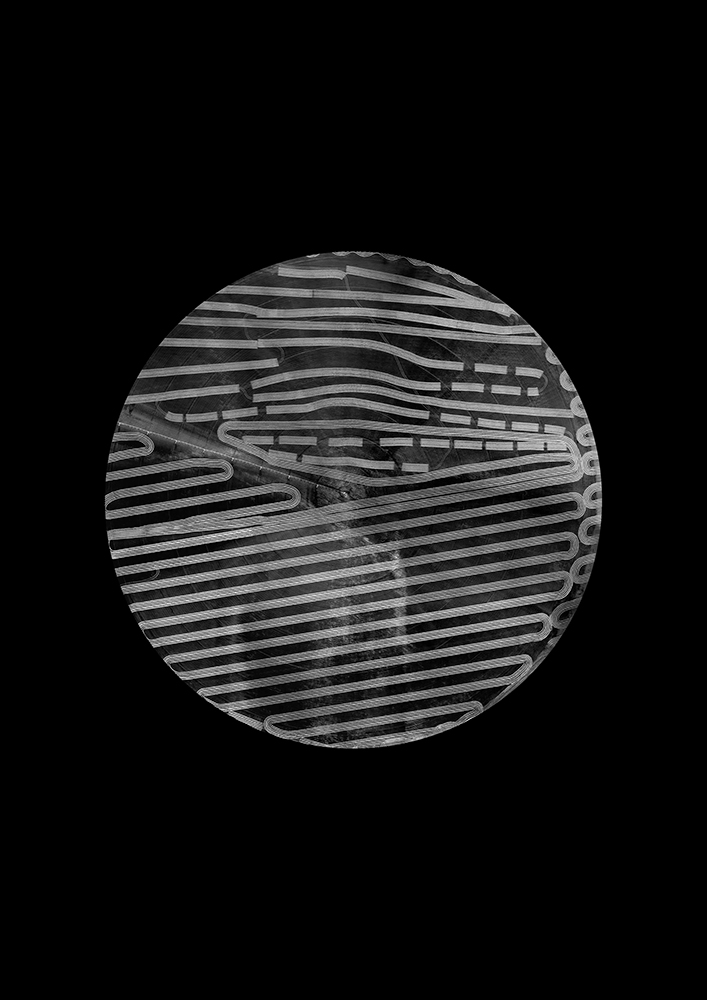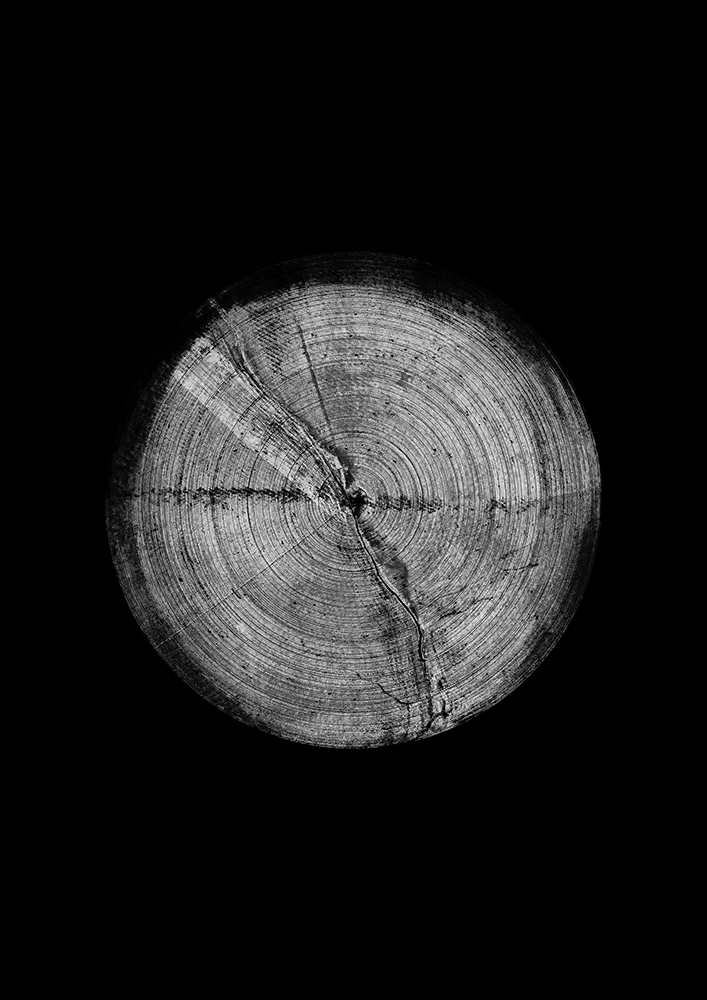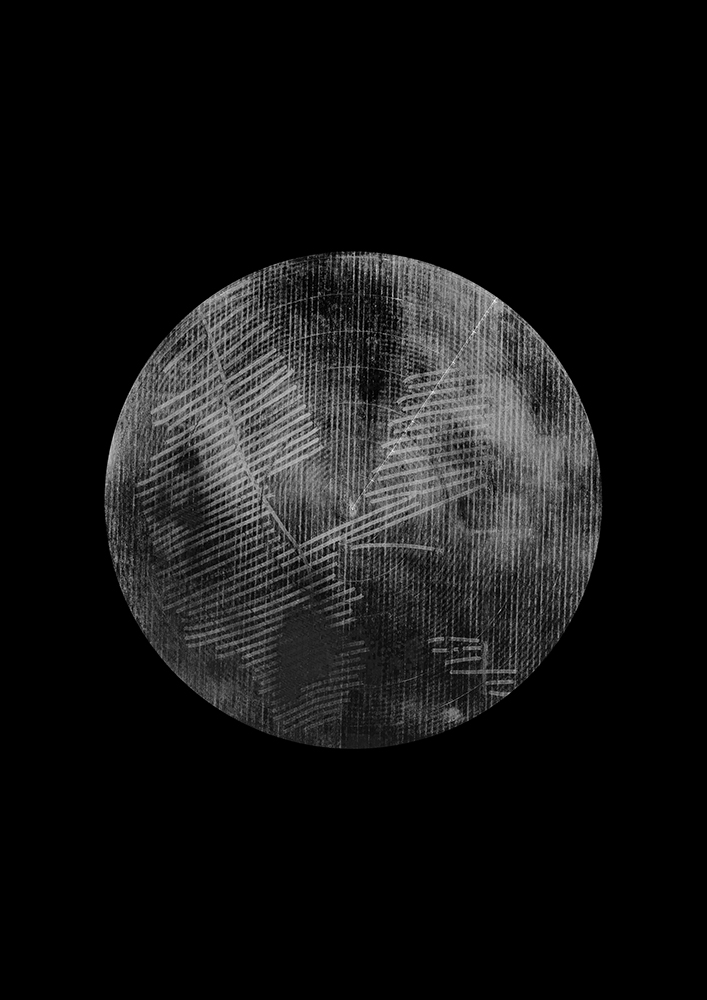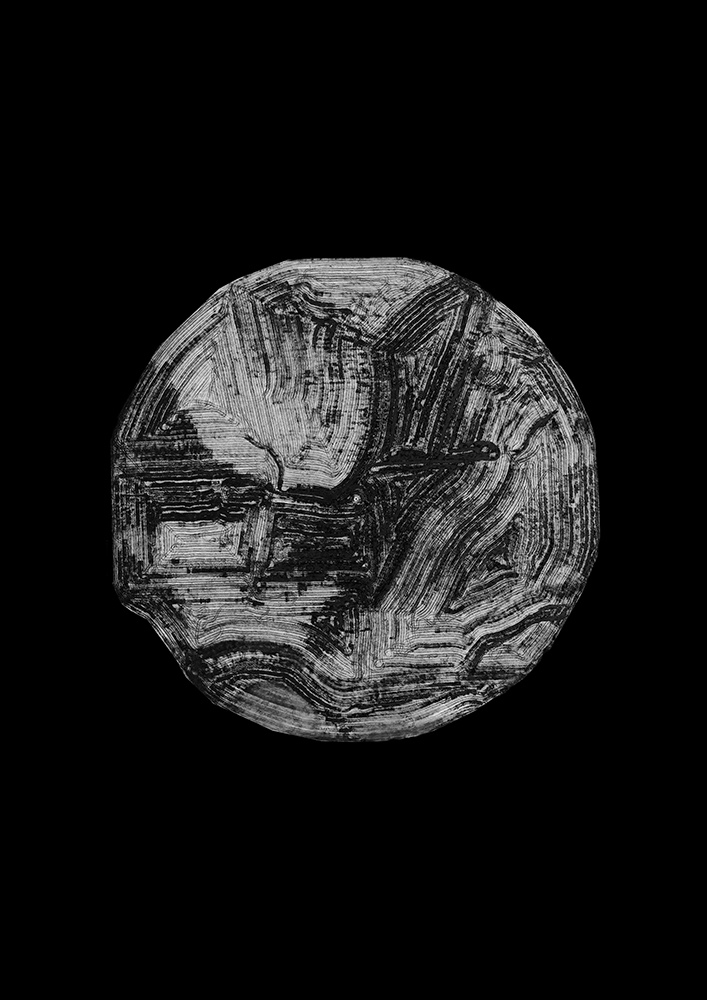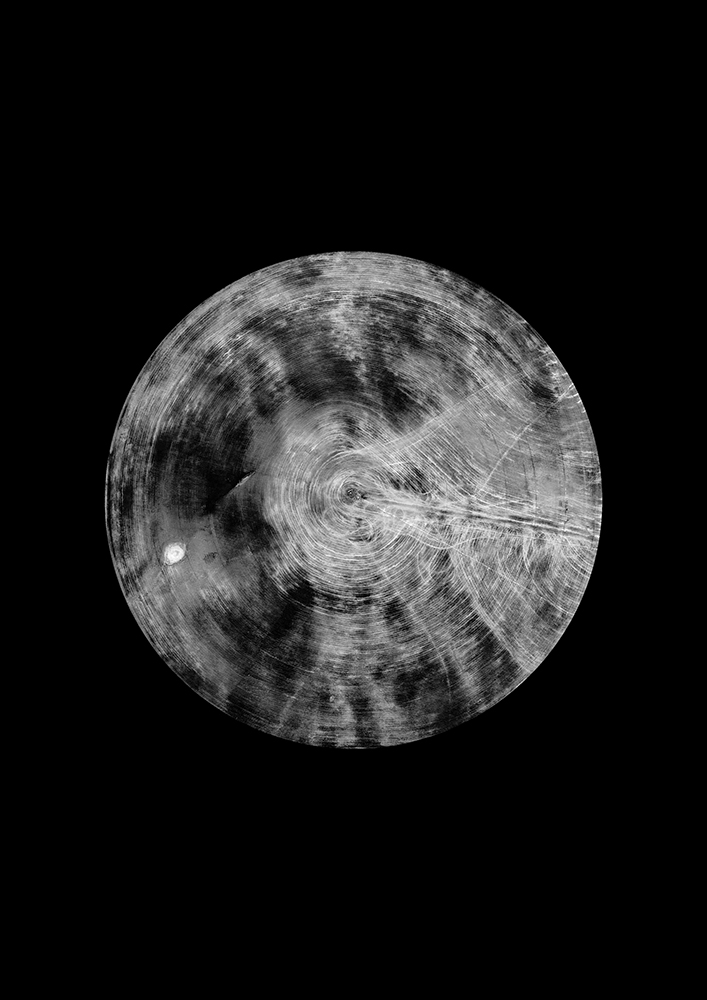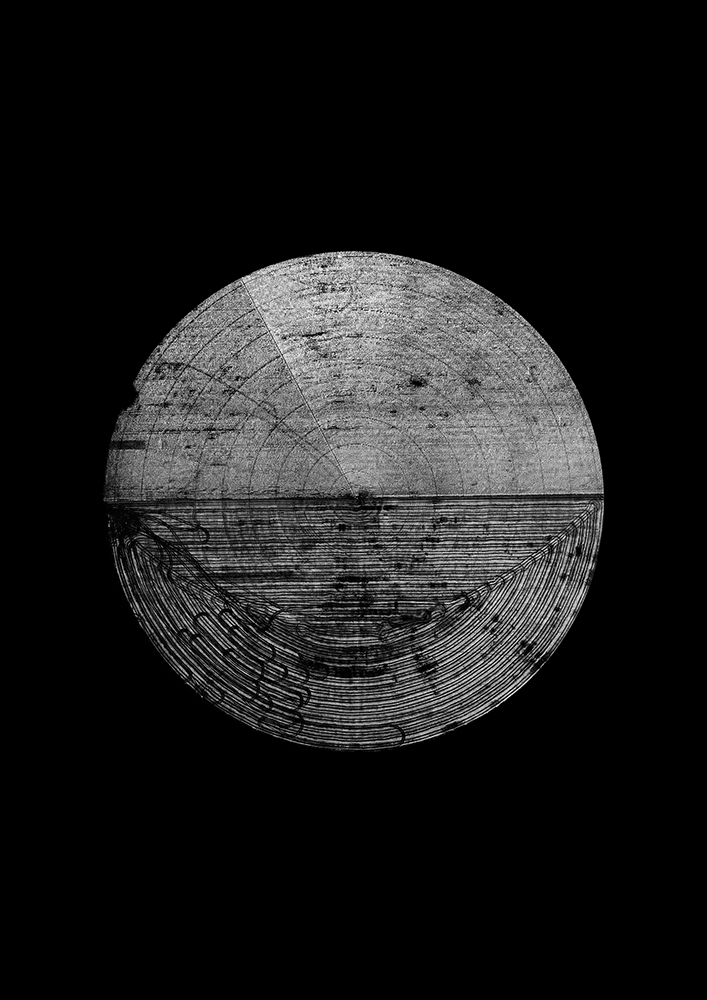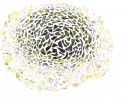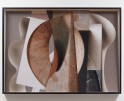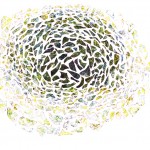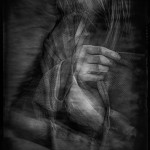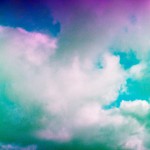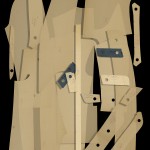Kari Varner: Blueprints for Slaughter and Groundwork
I cannot remember when I first stumbled across Kari Varner’s images, but I know I have been unable to get them out of my head since I saw them. Kari is an artist who uses research and science so successfully in the realm of fine art that it often gets overlooked. Her images could be viewed as distinctly fine art or science, but the combination is breathtaking. She uses texture in a unique way, along with experimentation through process. Kari often uses algae or invasive plants as the medium for her work. Her exploration of place is felt in every aspect of the work, from the subject to the material to the texture and pattern. No matter how viewers enter Kari’s images, they are faced with their own role in environmental alteration.
Kari Varner is a visual artist working in Binghamton, New York. Her explorations of the landscape often take the form of photographs, installations and ephemeral works. She received a BFA in Electronic Media Arts Design from the University of Denver and an MFA in Visual Art from Washington University in St. Louis. She currently holds the position of lecturer in photography at Binghamton University and has previously taught at the University of Denver in Colorado, Santa Reparata International School of Art and Florence Institute of Design International, affiliated with the University of Chester, in Florence, Italy.
Her work has been shown in solo and group exhibitions abroad, including the Palace and Museum Bourbon del Monte in Monte Santa Maria Tiberina, Italy; San Marco Basilica in Florence, Italy; and Kunst(zeug)haus Rapperswil-Jona Museum and Kammgarn West Schaffhausen in Switzerland. Previous exhibitions in the United States include the Mildred Lane Kemper Art Museum in St. Louis, Light Work, the Candela Gallery and Arrowmont School of Arts and Crafts. She has been awarded residencies at Millay Arts, Kimmel Harding Nelson, Wofford College and Alfred University. She has received grants from Light Work and the Puffin Foundation.
Follow Kari on Instagram at: @karivarner
Blueprints for Slaughter and Groundwork
The echoes of industry and human presence are inscribed upon the landscape. This body of work explores these traces, along with the ecological and economic value we assign to altered environments. Drawing from the environment as subject and material, images are formed from the very materials enacting change in the land and water. In this organic alchemical process of creation, the photograph itself emerges from an altered ecology.
I form relationships with landscapes by wandering and foraging for photographs and plants alike. Coming away with both in hand, the two are intimately tied. Invasive plants are conscripted into the process of making. Cut and boiled for photographic developer their petals picked and crushed to make anthotype emulsion; though labeled as undesirable, destructive and worthy of eradication, the emergence of the photograph is entirely reliant upon these plants as material.
In other works, the photograph is not harvested but grown. Images of poultry plants that contribute significantly to algal blooms are formed directly from algae. The photograph, requires a week of daily care through the pipetting of nitrogen-based fertilizer, the very same sort of substance contributing to fresh and salt water dead zones.
By using these materials, I become implicated in these processes of environmental alteration. Often the material experiments I undertake seem a reflection of our experiments on the environment itself. How much can the material or land tolerate before it ceases to be recognized, before its identity is irrevocably altered or lost.
Epiphany Knedler: How did your projects come about?
Kari Varner: In the spring of 2020, my fascination with center-pivot fields led me to spend many hours on google earth scanning the fields of Kansas. From my vantage point high overhead, I came to see the processes of industrialized agriculture as modes of mark making, which have inscribed a history of land and water use into the terrain. Frequently, while “photographing” fields I would come upon gridded feedlots, which were easily distinguishable from the sea of circles surrounding them. Through this dual collecting of fields and feedlots, I amassed many hundreds of images.
EK: What relationship do place or memory play within your practice?
KV: As a resident of Italy during the covid-19 lockdown, I was unable to leave the country and the landscape of my home state felt especially distant. Satellite imagery offered access, but in the form of a flat, pixeled representation. Because the formation of this work stemmed from the inability to have a direct experience with the landscape, the photographs of individual fields and feedlots speak to both place and non-place. There is a disorientation and sterility in seeing a place from above, which I sought to exaggerate through the use of cyanotype in the case of the feedlots and digital alteration in images of the fields.
EK: Is there a specific image that is your favorite or particularly meaningful to this series?
KV: Systems of intensive farming yield uniformity through the patterns they carve into the land.
In this work the system is as much the subject as the particular impression in the soil or configuration of pens in a certain composition. These images highlight this shared language made evident from a bird’s-eye-view; therefore, they function best as a series. From a visual standpoint, of the 104 cyanotypes and 25 fields, I am drawn to the photographs where human labor feels especially present. There are certain cyanotypes where the barely perceptible cows are gathered along the fence line anticipating the drop off of more feed. In a system of such grand-scale, these details are a reminder of the role that we all play in environmental alteration.
EK: Can you tell us about your artistic practice?
KV: Fundamentally, the photograph is at the core of all that I make though the resulting work can differ significantly from one project to the next. Relationship between material and subject is especially significant and this has led me to seek out closer collaborations with nature through the materials used. Growing images from algae or boiling an invasive plant to make developer, leads to questions of how we assign value to a particular environment, species, or industrial process. Though I no longer live in the region, I continue to look to the Midwest when exploring this dialogue between environment and industry.
EK: What’s next for you?
KV: After spending many hours producing images on a screen, I have returned to the field to make work directly in and often with the environment. I am currently utilizing displaced, or what are often referred to as invasive plants, to create photographic and film developer. These harvested and boiled plants are both subject and material as I explore our shifting relationship to place within an altered ecology. I have not altogether abandoned my center-pivot fields and am currently producing a quilt composed of over 300 pieces, each one an image of a center-pivot field in Wallace County, Kansas. Wallace County is notable for having lost 80% of its water from the Ogallala Aquifer since the beginning of large-scale extraction following World War II. Though the form and approach of these works are radically different, they represent a continued inquiry into the echoes of industry and human presence on the landscape. I would like to thank the Light Work organization, the Institute for Electronic Arts at Alfred University, and Wofford College for their support of this work.
Epiphany Knedler is an interdisciplinary artist + educator exploring the ways we engage with history. She graduated from the University of South Dakota with a BFA in Studio Art and a BA in Political Science and completed her MFA in Studio Art at East Carolina University. She is based in Aberdeen, South Dakota, serving as a Lecturer of Art and the co-curator for the art collective Midwest Nice Art. Her work has been exhibited in the New York Times, Vermont Center for Photography, Lenscratch, Dek Unu Arts, and awarded through the Lucie Foundation, F-Stop Magazine, and Photolucida Critical Mass.
Follow Epiphany on Instagram: @epiphanysk
Posts on Lenscratch may not be reproduced without the permission of the Lenscratch staff and the photographer.
Recommended
-
The Female Gaze: Alysia Macaulay – Forms Uniquely Her OwnDecember 17th, 2025
-
Bill Armstrong: All A Blur: Photographs from the Infinity SeriesNovember 17th, 2025
-
Robert Rauschenberg at Gemini G.E.LOctober 18th, 2025
-
Erin Shirreff: Permanent DraftsAugust 24th, 2025
-
Shelagh Howard: The Secret KeepersJuly 7th, 2025

